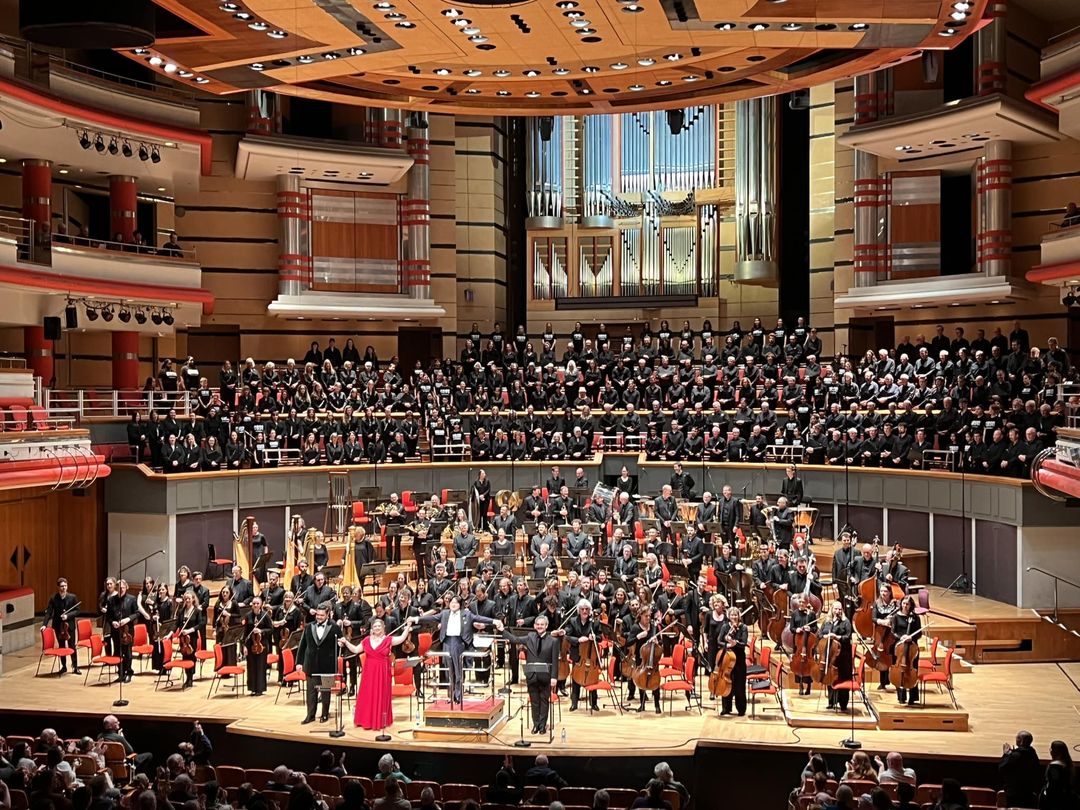Britain’s first female principal flute
RIPThe death has been communicated of Patricia Lynden, principal flute of the Royal Opera House from 1956 and of the Philharmonia Orchestra in the 1970s. Rafael Kubelik hired her at Covent Garden and Riccardo Muti at the Philharmonia.
Pat was one of the best-liked, least confrontational musicians on the London scene. Much of her spare time was applied to looking after her disabled mother.
She was 89 at her passing, having retired at 55.
Full life story here.






Thanks for posting this, Norman, and also the link. I well remember Pat Lynden’s lustrous playing with the NPO and then Philharmonia during the 1970s, one of the finest principal flautists the orchestra ever had. RIP.
How sad. Pat was a lovely lady. She played alongside my father, John McCaw, in the Philharmonia for a number of years and they became firm friends. Very much the end of an era. My condolences to her friends and family.
And daddy McCaw was a pretty triffic player too!
It was common for women and minorities in orchestras during that era to keep a low profile. Other examples include Maisie Ringham who played trombone in the Hallé Orchestra from 1944 to 1955, and Helen Kotas Hirsch who played horn in the Chicago Symphony from 1941 to 1947. The CSO didn’t even have a dressing room for women so Kotas had to change in the broom closet.
Dr. Jutta Allmendinger (Univ. of Munich) and Dr. Richard Hackman (Harvard,) both specialists in institutional sociology, found several effects when women become a significant minority in orchestras (i.e. 10 to 40%): tightened identity group boundaries for both genders; increased cross-group stereotyping and conflict; less social support across gender boundaries; and heightened personal tension for everyone. But they make an interesting observation about the intimidation of women in orchestras, and how institutions can seek a frictionless work atmosphere at the expense of creative growth:
“It is no doubt true that, in male-dominated organizations, neither the organization nor its members are obtaining the benefits (such as personal learning and improved task performance) that compositional diversity [gender integration] can bring. Indeed, our qualitative data suggest that many women find that there are strong incentives for them to keep a low profile, to behave closely in accord with existing orchestral norms, and generally to be as non-intrusive as they can. This stance is costly to the orchestra because it protects majority members from exposure to unfamiliar perspectives and from the need to scrutinize and reconsider traditional behavioral norms.”
Reference: Allmendinger, J. & Hackman, J.R., “The More, the Better?,” unpublished working paper (Harvard Business School, January 1994) pg. 11. See also: “The More, the Better? A Four Nation Study of the Inclusion of Women in Symphony Orchestras,” Social Forces, December 1995, 74(2):423-460, University of North Carolina.
A wonderful player as can be heard in the finale of Brahms 4 (live – Stokowski conducting at the age of 92) – such gorgeous phrasing! Listen from 31:15 (in fact listen to the whole thing – as Kleiber said of Stokowski “absolute miracles”)
https://www.youtube.com/watch?v=0l_Go4pYc8A
This Brahms 4 , live and studio of this time is something unique. Full of fever and burst and elegy … some people don’t like Stokowski, he has his flaws, but not many conductor could make the music that alive…
What about Atarah.
She preceded Atarah